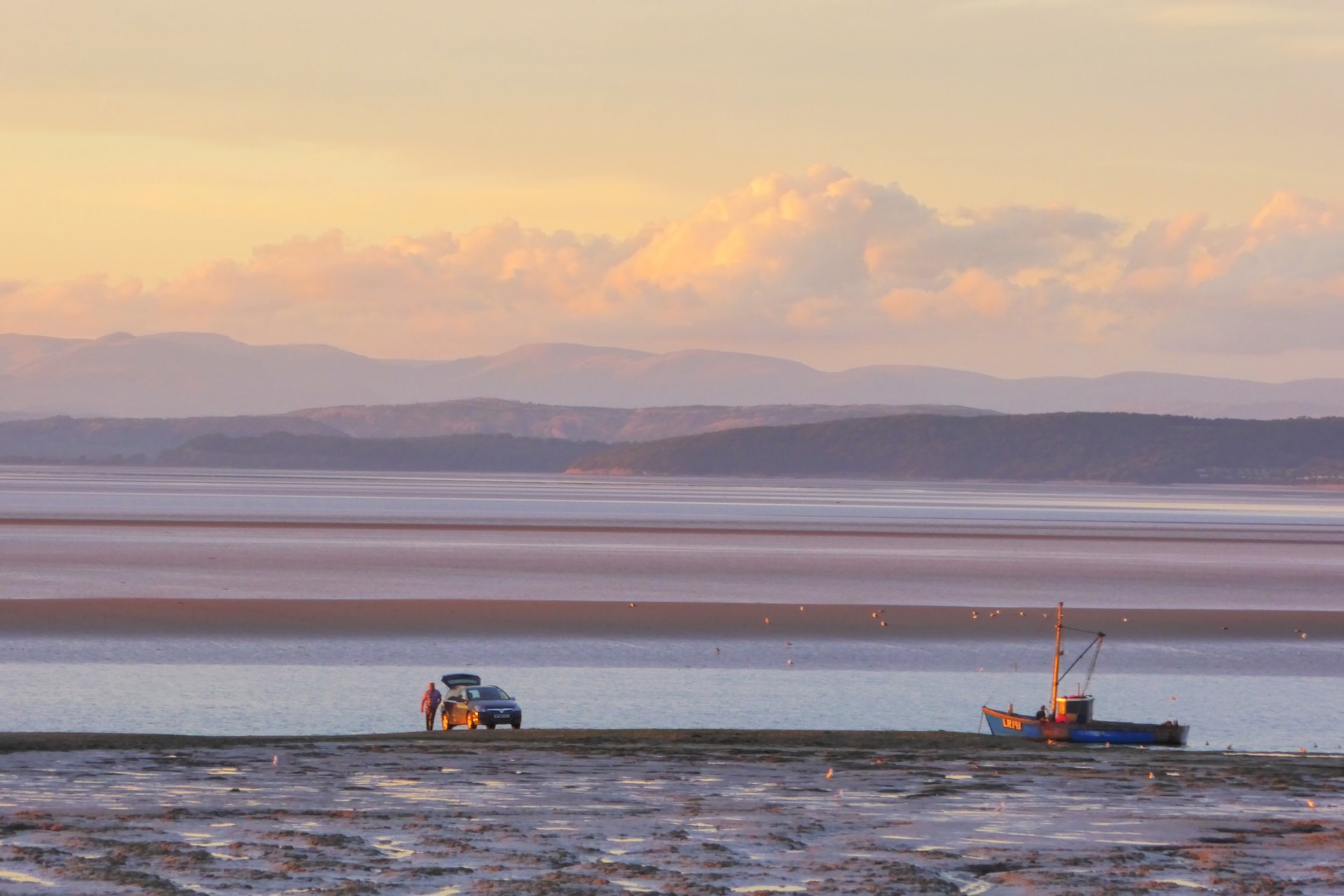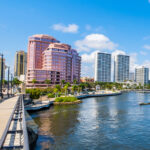Nestled on the northwest coast of England, Morecambe Bay is a captivating blend of natural beauty, rich history, and warm community spirit. Stretching from the southern edge of the Lake District to the Lancashire coast, this expansive intertidal area boasts stunning landscapes, a diverse ecosystem, and a multitude of attractions. This article delves into the allure of Morecambe Bay, highlighting its significance, attractions, and unique features.
Natural Splendor and Ecological Importance
Morecambe Bay is the UK’s largest expanse of mudflats and sand, covering a massive 310 square kilometers. The bay’s tidal range, combined with its vast size, results in a shifting landscape that morphs with each ebb and flow of the tide. This dynamism not only offers spectacular views but also supports a rich biodiversity.
Birdwatchers’ Paradise: The bay is renowned for its birdlife, being a crucial wintering and stop-over point for numerous migratory birds. Species like oystercatchers, curlews, and plovers can often be spotted, making the area a favorite for ornithologists and nature enthusiasts.
Marine Life: The sands and mudflats are home to a vast array of marine life, from tiny shrimps to seals that often bask on the banks of the bay’s many estuaries.
Historical Significance
Morecambe Bay holds tales of smugglers, fishermen, and traders, with its history deeply intertwined with maritime adventures.
Piel Island: Located at the southern tip of the bay, this small island boasts the historic Piel Castle, which dates back to the 14th century. The island’s intriguing history includes tales of shipwrecks, royalty, and piracy.
Fishing Traditions: For generations, the communities around Morecambe Bay have relied on fishing, particularly shrimp fishing. This rich heritage is celebrated annually with events and festivals that honor the bay’s longstanding maritime traditions.
Modern Attractions
While Morecambe Bay’s natural beauty and history are undeniably captivating, modern developments have also enhanced its appeal.
The Tern Project: This public art initiative has seen a series of sculptures and artworks installed along Morecambe’s promenade, celebrating the area’s birdlife and natural beauty.
Eric Morecambe Statue: Honoring the famous comedian and the town’s namesake, this beloved statue has become an iconic meeting point and offers picturesque views of the bay.
Festivals and Events: From the annual kite festival that fills the sky with color to music and arts festivals, Morecambe Bay is alive with events that cater to diverse interests.
The Challenges of Morecambe Bay
While the bay is undeniably beautiful, it is also notorious for its treacherous tides and shifting sands, making it perilous for the unfamiliar. Over the years, there have been numerous incidents of individuals getting stranded due to rapidly incoming tides.
Guided Walks: Recognizing the bay’s challenges, guided cross-bay walks are offered, led by the Queen’s Guide to the Sands. These walks allow visitors to experience the bay’s vastness safely while learning about its ecology, history, and geology.
Conservation Efforts
Given Morecambe Bay’s ecological importance, numerous conservation initiatives aim to preserve its unique habitats and biodiversity.
Morecambe Bay Partnership: This initiative brings together various stakeholders, from local communities to government agencies, working collaboratively on conservation, heritage preservation, and sustainable development.
Marine Conservation Zones: Parts of the bay have been designated as Marine Conservation Zones, ensuring protection for its habitats and marine life.
Morecambe Bay is more than just a scenic spot on England’s coastline. It’s a testament to nature’s grandeur, the persistence of communities that rely on its bounty, and the harmonious blend of history and modernity. Whether you’re a nature lover drawn to its ecological wonders, a history buff keen on exploring maritime tales, or simply someone seeking a serene coastal escape, Morecambe Bay promises a rich and fulfilling experience. As with all natural wonders, there’s a responsibility to engage with it sustainably, ensuring that its beauty and significance endure for generations to come.
Apart from its natural and historical marvels, Morecambe Bay is a culinary destination in its own right. The region’s gastronomic offerings reflect its maritime heritage and the rich produce of its hinterlands.
Morecambe Bay Shrimps: These brown shrimps are a local delicacy and have been fished in the bay for generations. Typically potted with spiced butter, they’re a treat that visitors shouldn’t miss.
Seafood Galore: Owing to its location, the bay offers a plethora of seafood, from cockles and mussels to fish varieties. Several restaurants and stalls around the bay serve these fresh catches, often cooked in traditional recipes passed down through generations.
Farm Produce: Beyond seafood, the regions surrounding Morecambe Bay are lush with farmlands producing meats, dairy, and fresh produce. This ensures that the local cuisine is a delightful blend of land and sea.
Activities and Adventures
For those who like to pair their travel with a bit of adrenaline, Morecambe Bay doesn’t disappoint.
Sailing and Water Sports: The vast expanse of water is perfect for sailing enthusiasts, and the bay’s various inlets provide opportunities for kayaking and paddleboarding.
Cycling Routes: The Bay Cycle Way is a relatively relaxed route for cyclists wanting to explore the bay’s diverse landscapes, taking them through quaint villages, past historical landmarks, and always offering panoramic bay views.
Nature Trails: Guided and self-led walking trails are abundant, each offering a unique perspective of the bay’s diverse habitats.
Community and Culture
The towns and villages dotting Morecambe Bay are alive with community spirit. Festivals, workshops, and gatherings are common, showcasing local arts, crafts, and traditions.
Local Artisans: Many artisans call this region home, creating everything from traditional crafts to contemporary artworks. Their studios often welcome visitors, making for a delightful cultural immersion.
Music and Performance: From local bands performing in cozy pubs to theatre productions echoing the bay’s stories, there’s always something happening in the cultural realm.
Staying Responsible
Given the ecological significance of Morecambe Bay, visitors are encouraged to travel responsibly.
Respect Wildlife: While it’s tempting to approach seals or birds, it’s crucial to maintain a distance to avoid disturbing their natural behaviors.
Tread Lightly: Stick to designated paths, especially in sensitive habitats, to prevent erosion and damage.
Sustainable Consumption: Opt for locally sourced produce and seafood, ensuring that your consumption supports local communities and reduces the carbon footprint.
Morecambe Bay, with its vastness and vitality, is a tapestry of experiences. From the hypnotic dance of its tides to the melodies of its festivals, from the flavors of its kitchens to the tales of its locals, every moment here is a narrative. As travelers, while we soak in the bay’s wonders, we also become a part of its ever-evolving story. And as with all treasured tales, the story of Morecambe Bay is one that beckons to be shared, celebrated, and revisited.







